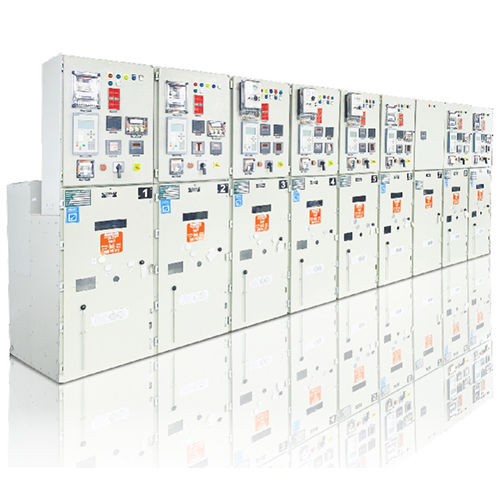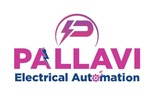à¤à¤¦à¥à¤¯à¥à¤à¤¿à¤ HT पà¥à¤¨à¤²
à¤à¤¦à¥à¤¯à¥à¤à¤¿à¤ HT पà¥à¤¨à¤² Specification
- प्रॉडक्ट टाइप
- मटेरियल
- सतह की फ़िनिश
- रेटेड वोल्टेज
- 220-440 वोल्ट (V)
- फ़्रिक्वेंसी (मेगाहर्ट्ज)
- 50 हर्ट्ज (एचजेड)
à¤à¤¦à¥à¤¯à¥à¤à¤¿à¤ HT पà¥à¤¨à¤² Trade Information
- Minimum Order Quantity
- 1 Unit
- एफओबी पोर्ट
- INDIAN
- भुगतान की शर्तें
- आपूर्ति की क्षमता
- 10 प्रति महीने
- डिलीवरी का समय
- 5-7 दिन
- नमूना उपलब्ध
- No
- नमूना नीति
- मुख्य निर्यात बाजार
- मुख्य घरेलू बाज़ार
About à¤à¤¦à¥à¤¯à¥à¤à¤¿à¤ HT पà¥à¤¨à¤²
Sure, here's a description of an industrial HT panel:
An Industrial HT (High Tension) Panel is a critical component in electrical power distribution systems within industrial settings, handling high voltage electricity typically ranging from 1.1 kV up to 33 kV or even higher, depending on the specific application and regional standards. These robust enclosures are designed to safely house, control, and protect high-voltage electrical equipment.
Key Functions:
- Power Distribution: They act as central points for distributing high-voltage power from the main incoming supply (e.g., from a utility grid or a high-capacity transformer) to various substations, large motors, industrial machinery, and other high-power loads within a facility.
- Protection: HT panels incorporate sophisticated protective relays, circuit breakers (like Vacuum Circuit Breakers - VCBs or SF6 Circuit Breakers), and fuses to safeguard equipment and personnel from faults such as overcurrents, short circuits, earth faults, and voltage fluctuations.
- Control and Monitoring: They provide mechanisms for switching, isolating, and monitoring high-voltage circuits. This often includes metering for voltage, current, power factor, and energy consumption, along with control switches for operation and maintenance.
- Isolation: During maintenance or fault conditions, HT panels allow for the safe isolation of specific sections of the high-voltage network, ensuring the safety of personnel working on de-energized equipment.
Typical Components:
- Enclosure: Heavy-duty, robust metal (often sheet steel) cabinet designed for industrial environments, offering protection against dust, moisture, and mechanical impact. It typically includes provisions for ventilation and cable entry/exit.
- High Voltage Busbars: Conductors (usually copper or aluminum) that carry the high-voltage current throughout the panel.
- Circuit Breakers: Often VCBs or SF6 circuit breakers, designed for interrupting high fault currents. They can be fixed or draw-out type for easier maintenance.
- Disconnecting Switches/Isolators: Used to physically disconnect parts of the circuit for safety during maintenance, ensuring a visible break.
- Current Transformers (CTs) and Potential Transformers (PTs): Used to step down high currents and voltages to measurable levels for metering and protective relays.
- Protective Relays: Electronic or electro-mechanical devices that detect fault conditions and initiate the tripping of circuit breakers.
- Metering Instruments: Ammeters, voltmeters, power factor meters, energy meters for monitoring electrical parameters.
- Control Wiring and Terminal Blocks: For internal connections and external control signals.
- Earthing/Grounding System: A crucial safety feature to dissipate fault currents to the ground.
- Safety Interlocks: Mechanical or electrical interlocks to prevent unsafe operations (e.g., operating a disconnector under load).
Applications:
Industrial HT panels are indispensable in:
- Manufacturing plants
- Power generation facilities
- Large commercial complexes
- Mining operations
- Oil and gas industries
- Heavy engineering industries
- Any large facility requiring high-voltage power distribution.
Safety Considerations:
Due to the high voltages involved, safety is paramount. HT panels are designed with numerous safety features, and their installation, operation, and maintenance require specialized knowledge and strict adherence to safety protocols and electrical codes. Regular maintenance and testing are crucial to ensure their reliable and safe operation.


Price: Â
- 50
- 100
- 200
- 250
- 500
- 1000+

 English
English Spanish
Spanish French
French German
German Italian
Italian Chinese (Simplified)
Chinese (Simplified) Japanese
Japanese Korean
Korean Arabic
Arabic Portuguese
Portuguese

